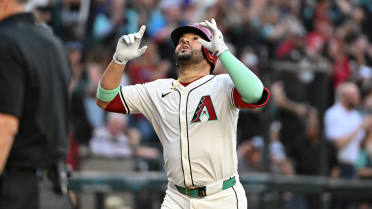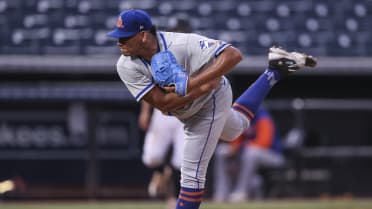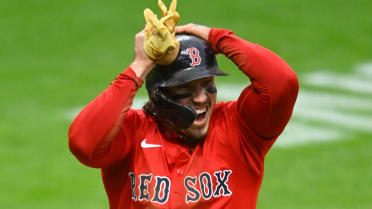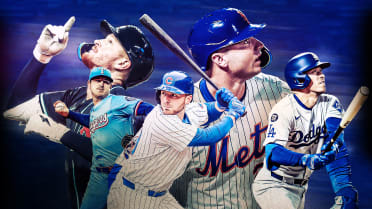You saw the Dodgers blow through a weekend series in Wrigley having allowed all of three runs, and before that you saw them take a brief two-game series against the Giants allowing only two runs, and you know the run prevention has been really good. When we say that their 2.19 ERA leads the Majors, that shouldn’t be surprising.
But this? This is something else. Through 27 games, the Dodgers have allowed all of 65 runs, even after Monday's 5-1 loss to Pittsburgh. Since earned runs became a tracked statistic way back in 1913, that’s the fifth-best start to a season, well, ever.
Fewest runs allowed, first 27 games
60 – 1981 A’s
61 – 1968 Cleveland
62 -- 1981 Dodgers
63 -- 1958 Yankees
65 – 2022 Dodgers
“But offense is down,” you’re saying, and indeed it is; April 2022 just had the lowest slugging percentage of any month in 30 years. Maybe it’s not fair to compare what’s happening now to what happened in high-offense years like 1930, 1987 or 2019.
Fair enough. So instead, let’s compare the Dodgers just to the rest of baseball in 2022. They have that 2.19 ERA, and that’s a mere 58% of the Major League average of 3.74, or barely more than half. If we look at that since 1913 as well, it's less about that they're atop the list and more about how far atop the list they are.
Best ERA compared to season MLB average
58% – 2022 Dodgers
70% – 2020 Dodgers
72% – 2017 Cleveland
73% – 2022 Yankees
74% – 2021 Dodgers (tied with several)
Remember: This isn’t comparing them to the 2019 Dodgers or the 1927 Yankees, for what it’s worth; it’s comparing them to the 2022 Mets (who have a 3.24 ERA) and the 2022 Reds (who have a 6.55 mark) and everyone else this year.
Now, two things should be clear from that last ranking. The first, obviously, is that it’s still early. Note that the 2020 Dodgers, who played only a 60-game season, are second. Note that the 2022 Yankees, off to a tremendous start of their own, are fourth.
But, secondly, note that this probably isn’t a fluke, because the Dodgers do things like this all the time. Last year’s Dodgers, who had an ERA a mere 74% of the Major League average, are high on that list too, second-best if you’re just looking at full seasons.
Preventing runs, well, it’s just what they do, and have for some time. Since 2017, not only have the Dodgers allowed baseball’s fewest runs, but they’ve allowed 264 less than second-place Houston … and 1,444 less than 30th-place Baltimore.
Let’s stick with this crew, though, the one that lost Kenley Jansen to Atlanta, got just three innings out of Blake Treinen before he got injured and is still humming right along -- with a heavy diet of weak Pirates and D-backs lineups upcoming this month. What’s the winning approach this time around?
You can probably guess what’s necessary to be a dominant pitching staff, so let’s go through the first ones quickly, because you won’t be surprised to know that …
1) They miss plenty of bats.
... their 26% strikeout rate is third best in baseball. It’s difficult, if not impossible, in modern baseball to win with a pitch-to-contact approach; you’d rather be on the end of a list with the pitchers of the Mets and Brewers than the side with the D-backs and Royals.
Right alongside this is that …
2) They don’t allow any walks.
… their 7% walk rate is not only baseball’s lowest, in part because they throw more first-pitch strikes (64%) than any team in the NL, behind only the Blue Jays in the Majors, which of course leads to the fact that …
3) They get ahead in the count.
… only 25% of the pitches they’ve thrown have come with the batter ahead in the count, essentially tied with Toronto for best.
Skip along to the third true outcome, where you’ll find …
4) They don’t allow home runs.
… that by allowing only 17 homers, or 0.6 HR/9, they’re tied for the hardest staff in baseball to dinger against, and of course a great way to avoid loud contact is …
5) They don’t allow hard-hit baseballs.
… to avoid loud contact. The Dodgers allow baseball’s lowest hard-hit rate (32%), which isn’t just number one by a lot -- though it is -- it’s also the fourth Dodgers team to appear in the top 10 of hard-hit prevention since Statcast tracking came online in 2015.
Oh, and when they do let the ball be put in play? Guess what: Los Angeles' defense …
6) They turn balls into outs better than anyone.
… doesn’t allow hits. The Dodgers lead the league in lowest BABIP allowed (.247), which, if kept up for a full season, would be the best on record since … ever. It won’t keep up for a full season, of course. It’s the second week of May. But you get the idea. It’s not just pitching, it’s a full run-prevention unit.
(For what it’s worth: We don’t think the Dodgers have some all-time great defensive talent, or even the best this year, which is reflected in other advanced metrics. This is likely a combination of all that weak contact, plus strong positioning, as shown partially [but hardly fully] by the fact they shift the second most often in MLB.)
All of that is explaining what they’ve done, but little of it gets into the how of it all -- aside from things as simple as “having Clayton Kershaw, and Walker Buehler, and Julio Urías, who was already one of the best hard-contact-avoiders of the past four years.”
That gets considerably more complicated, and likely into how the team functions together as one unit -- “I think our gameplanning is as good as anybody in baseball,” manager Dave Roberts said on Sunday -- but let’s briefly pick our favorite of assuredly many more reasons to highlight:
The sliders are sliding
It’s interesting to look at how each pitch type is succeeding for the Dodgers, and for this we’ll use Run Value, which in simple terms is quantity x quality, and in more complex terms, assigns a value to every pitch, not just the final one of a plate appearance. (There’s value in your fastball getting you ahead 0-1, then 0-2, even if you then give up a hit on your curveball.)
Obviously, they’re good in all of these -- how could they not be -- but it’s the slider that stands out. That’s a little about Kershaw using it as his go-to pitch these days, and Daniel Hudson using it as often as his fastball for the first time, and the currently-injured Andrew Heaney and others adopting the ‘sweeper’ that’s now so popular. Pitching, these days, is no longer fastball-first.
There’s no denying the presence of Kershaw, Buehler, Craig Kimbrel and so on. Stars matter. But there’s also the minor factor of finding under-the-radar pitchers and getting use out of them, like finding Alex Vesia, Reyes Moronta, Phil Bickford and Evan Phillips via waiver claims or little-noticed trades (that quartet: a 2.61 ERA with 35 K and 5 BB) or jumping as quickly as they could to sign Heaney after he’d pitched himself out of New York last year. That’s all going to matter as they begin a run of 31 games in 30 days.
Or maybe, the best way to think about it all is like this:
Six pitchers have made a start for Los Angeles so far. Tyler Anderson’s perfectly solid 2.78 ERA is by far the worst. He’s the only one north of 2.00. In no version of baseball is a 2.78 ERA subpar … unless you’re in this particular Dodgers rotation. It might not be this good all year long. But it might not be far off, either.
Mike Petriello is a stats analyst for MLB.com, focusing on Statcast and Baseball Savant, and is also a contributor to MLB Network.




